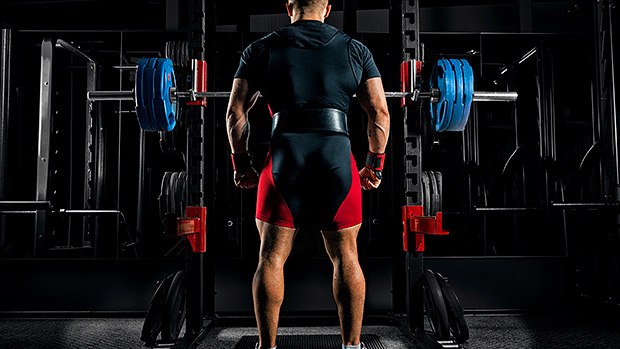Warming Up for a Big One
Young athletes often ask me about the best way to warm-up for a 1RM test on the bench press and squat. I'll answer that, but let me first address coaches who test the 1RM with their athletes.
I'm not a big fan of this practice in a group setting. That's just asking for an injury and bad form. Put 60 young, highly competitive men in room to compare strength and it can be a recipe for disaster.
I much prefer testing for a 3-5RM. Attempt the biggest weight you can get for 3-5 reps. And use the number of reps to estimate your 1RM. This is much safer and just as accurate.
Here are the percentages I use:
- 5 reps = 87%
- 4 reps = 90%
- 3 reps = 94%
If you get 315 pounds for 5 reps you estimate your 1RM as such:
- 1RM = 315 x 100 / 87
- 1RM = 315 x 1.149
- 1RM = 362 pounds
But I digress...
Warming Up for a 1RM
The progression essentially has three phases. Note that you need to have a pretty good idea of what your 1RM will be, within 10 pounds if possible.
If you've done heavy singles it should be fairly easy to evaluate where it'll be. If you haven't, you can use your sets of 3-5 reps. The percentages above will give you an idea of where your 1RM will be.
Normally you'll have two or three attempts to hit your max lift during the testing. The first two phases of the preparation will take you to that first attempt.
Important: Your first attempt should always be a sure thing. There's nothing worse than failing at your first lift. In a powerlifting competition you have to use that same weight (or go up). In sports testing you can still go down. But missing the lift will kill your drive and confidence.
You want a solid lift to start. We normally shoot for 94-95% of your estimated maximum for your first attempt. Although, if you have no experience with heavy singles you might want to use 90% of your estimated max for your first attempt.
Here's the first phase of the lift warm-up:
(The first two sections are adapted from Charles Poliquin's progression.)
- Set 1: Empty bar x 10 reps
- Set 2: 4 reps using estimated 40%, rest 10 seconds
- Set 3: 4 reps using estimated 40%, rest 30 seconds
- Set 4: 3 reps using estimated 60%, rest 30 seconds
That was the low-stress phase. On those 5 reps, your focus should be on exaggerating tightness and acceleration. Focus on patterning perfect technique. Do NOT do these easier sets nonchalantly; respect the bar and use these sets to get into the perfect groove.
Then continue with...
- Set 5: 2 reps using estimated 75%, rest 60 seconds
- Set 6: 1 rep using estimated 80%, rest 120 seconds
- Set 7: 1 rep using estimated 85%, rest 120 seconds
- Set 8: 1 rep using estimated 90%, rest 180 seconds
The goal is to get the feeling of heavier weights and amp up the nervous system, but also estimate your performance capacity at that moment. For instance, if 90% felt like a ton, you might need to be conservative with your attempts. If it felt like nothing, you might be able to adjust your starting attempt to 98% and then go for 103% or even 105%.
Then move on to...
- Set 9: Un-rack 105-110% of your maximum, walk-it out (if it's a squat) and hold for 6 seconds. Then rest 180 seconds (to potentiate the nervous system and give you a psychological boost).
- Set 10 (opening attempt): 1 rep using estimated 95%, rest 240 seconds
- Set 11* (second attempt): 1 rep using estimated 100%, rest 240 seconds
- Set 12* (third attempt, if you have one): 1 rep using estimated 105%
* Note that sets 11 and 12 can be adjusted depending on performance.





